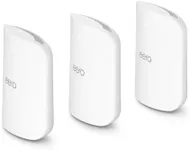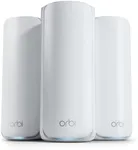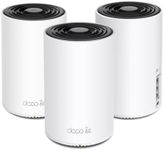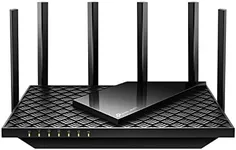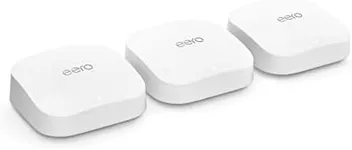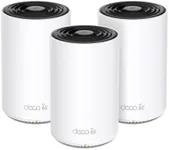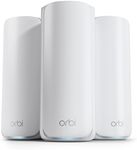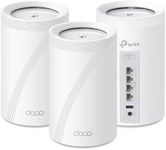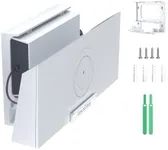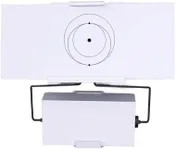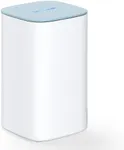Buying Guide for the Best Tri Band Mesh Wifi
When choosing a tri-band mesh WiFi system, it's important to understand how these systems work and what features are most important for your needs. A tri-band mesh WiFi system uses three separate frequency bands to provide a strong, reliable internet connection throughout your home or office. This type of system is particularly useful for larger spaces or homes with multiple floors, as it helps eliminate dead zones and ensures consistent coverage. To make the best choice, you'll need to consider several key specifications and how they align with your specific requirements.Coverage AreaCoverage area refers to the total space that the mesh WiFi system can effectively cover. This is important because it determines how well the system will work in your home or office. Coverage areas are typically measured in square feet. For small to medium-sized homes (up to 2,000 square feet), a basic system may suffice. For larger homes (2,000 to 4,000 square feet) or multi-story buildings, you may need a more robust system with additional nodes. Assess the size of your space and any potential obstacles like walls or floors that could interfere with the signal.
Number of NodesNodes are the individual units that make up a mesh WiFi system. The number of nodes you need depends on the size and layout of your space. More nodes generally mean better coverage and stronger signals. For a small apartment, one or two nodes might be enough. For larger homes or offices, you might need three or more nodes to ensure consistent coverage. Consider the layout of your space and any areas where you typically experience weak signals when deciding how many nodes you need.
SpeedSpeed refers to the maximum data transfer rate that the mesh WiFi system can handle, usually measured in megabits per second (Mbps). This is crucial for activities like streaming, gaming, and video conferencing. Basic systems may offer speeds up to 300 Mbps, which is sufficient for general web browsing and streaming on a few devices. For more demanding tasks or multiple users, look for systems offering speeds of 600 Mbps or higher. Assess your internet usage habits and the number of devices that will be connected to determine the speed you need.
Frequency BandsTri-band systems use three frequency bands: one 2.4 GHz band and two 5 GHz bands. The 2.4 GHz band offers longer range but slower speeds, while the 5 GHz bands provide faster speeds but shorter range. This setup helps balance the load and reduce congestion, ensuring a smoother internet experience. If you have many devices or engage in high-bandwidth activities, a tri-band system can help manage the traffic more efficiently. Consider the types of devices you use and their internet requirements when evaluating the importance of tri-band capabilities.
Ease of Setup and ManagementEase of setup and management refers to how simple it is to install and maintain the mesh WiFi system. Many modern systems come with user-friendly apps that guide you through the setup process and allow you to manage your network from your smartphone. Features like parental controls, guest networks, and automatic updates can also enhance your experience. If you're not tech-savvy, look for systems that are known for their straightforward setup and intuitive management features. Consider your comfort level with technology and how much time you're willing to spend on network maintenance.
Security FeaturesSecurity features are measures that protect your network from unauthorized access and cyber threats. These can include WPA3 encryption, automatic firmware updates, and built-in antivirus protection. Security is crucial to safeguard your personal information and devices. Look for systems that offer robust security features, especially if you have sensitive data or smart home devices connected to your network. Assess the level of security you need based on your internet usage and the types of devices you have.
